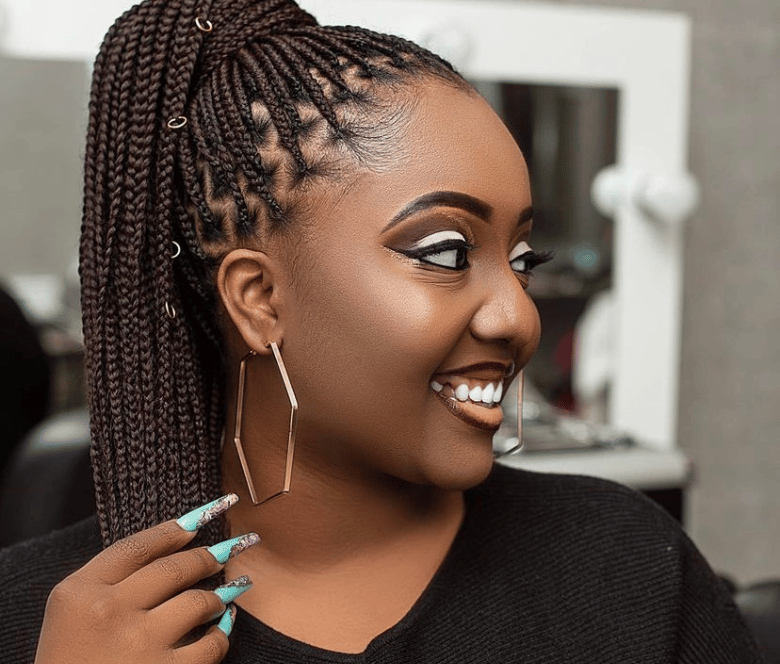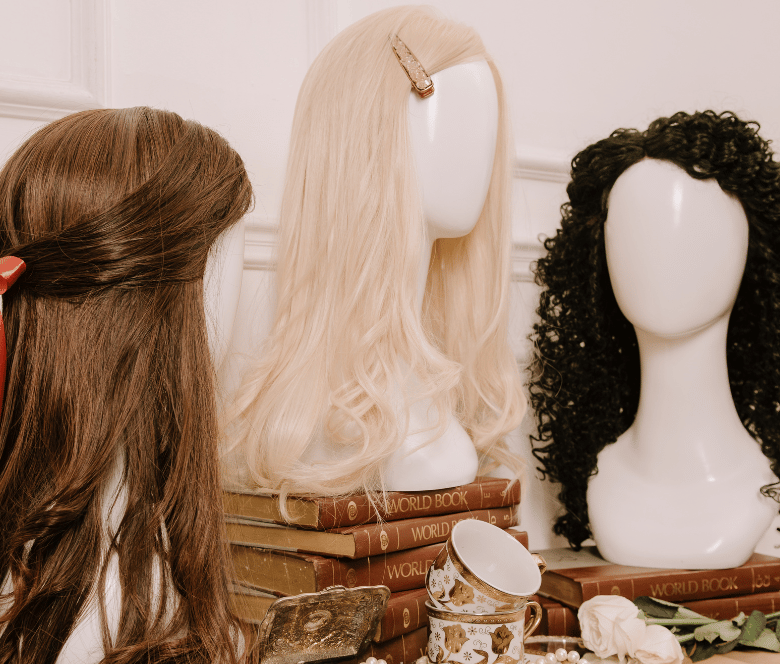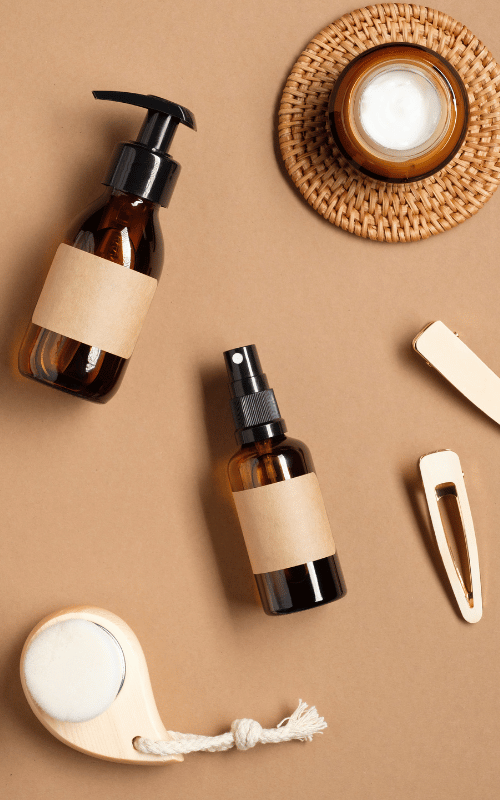The Answer to Your Curiosity About Hair Porosity
Knowing your hair porosity is more important than you think.
Hair Care | October 11, 2020

Are you facing the issue with dry hair, and it feels like you’ve tried every product to bring moisture back to your hair, but nothing worked? Maybe your hair always looks weighed down and feels greasy after you applied products to style your hair. These issues are happening because you do not know your hair porosity.
I have also made the mistake of following a regimen that did not work for my low porosity hair. I would have hairstyles that would look flat and feel dry and greasy. At one point, I was no longer retaining length, so I was struggling to grow my hair past my shoulders.
If you don’t want to be like me, then continue to read about porosity.

What is Hair Porosity?
The basic definition of hair porosity is how well your hair can absorb and retain moisture. In detail, the cuticle, which is the flexible outer layer of your hair, determines how well oils and moisture can pass in and out of the outer layer. There are three porosity levels your hair can be.
The Porosity Levels:
- Low porosity
- Medium porosity
- High porosity
I’ll give you some background information about hair structure to help you gain a better understanding of what hair porosity is. Then, you will learn more about the three porosity levels. First, you will need to know the three layers of the hair structure.
The 3 Layers
- The cuticle: The outermost layer of the hair shaft which is made from smaller cuticles. This is the toughest layer
- The medulla: The central part of the hair
- The cortex: The thickest layer that contains the pigment that gives your hair its color and fibrous proteins
For you to achieve healthy, shiny hair, you will need your moisturizing products, water, and oil to be able to pass through the cuticle to get to the cortex.
With that information you will find out how tough your cuticle is by testing your hair porosity. From there you will learn how to take care of your hair based on the results you receive afterward.
Determining Your Hair Porosity
The Float Test
This is considered the easiest way to test your porosity level and all you need is a glass of water and a few strands of hair.
- Shampoo and rinse your hair
- This test needs to be completed on freshly washed hair, free from any hair product, to receive an accurate test
- Fill a glass with water
- Make sure your water is not too hot or too cold. Lukewarm/room temperature water is best
- Drop the strand of hair into the glass of water
- Your strands of hair should be completely dry
- Observe as your hair might sink or float
- Let the strands sit for at least five minutes before determining your hair porosity
The results are in!
Your hair is…
- Low porosity: If the strand of hair floats at the top
- Medium porosity: If the strand of hair floats around in the middle of the glass
- High porosity: If the strand of hair sinks to the bottom
The Feel It Test
You take a strand of hair, and you pinch it with two fingers at the end of the strand. Now, drag your fingers up the strand of hair towards your scalp.
The results are in!
Your hair is…
- Low porosity: If the strand feels smooth
- High porosity: If the strand feels bumpy
This test is perfect for identifying low and high porosity but not medium.
You are now one step closer to understanding what will work best for your hair. Next, you will need to know more information about your hair porosity and the best practices to take care of it.

Low Porosity Hair
For low porosity hair, the cuticles are close together, causing the cuticles to lay flat. You can say the cuticle layer is a bouncer, and it is refusing to let any moisture come in. So, when you are washing your hair, you might realize it takes some time for water to saturate your hair.
If you like to air dry your hair, expect a long wait time. Any moisture your hair was able to absorb will be just as difficult to let it go. Since your hair tends to hold moisture you’re more likely to deal with product build-up. Some products might sit on top of your hair instead of absorbing into your hair. You might not realize that you could be adding more moisture on top of what is already there. You could also receive build-up from deep conditioners rich with protein which can cause your hair to feel stiff. Also, processing your hair with chemicals such as perming or dying your hair will be more difficult and require more time to process.
Although your hair requires more time and patience, you should know low porosity hair is often shiny and is usually considered healthy.
How to Manage Low Porosity Hair
When it comes to choosing products for your low porosity hair, you should keep these tips in mind. When you are reading off the ingredients of a product, make sure they have glycerin and honey. These two humectants are perfect for low porosity hair. What you don’t want in your products are oils and for conditioners protein. Products with oils can have a difficult time penetrating the cuticle, and conditioners with protein can cause product build-up.
Lighter oils such as jojoba oil, argan oil, etc. work best for low porosity hair. Thick products can be too much for your hair, so it would be better to stick with lighter, liquid-based products. If you have type 4 hair or your hair strands are thick, then it’s better to stick with products with a thick consistency. Find out your hair thickness and hair type to make sure.
Tip: Use heat when deep conditioning. You can use a hooded dryer, steamer, or heat cap to give you the best results. If you don’t have any of these, then just put a plastic cap over your head and let your natural heat do the work. The heat helps your hair absorb moisture from a deep conditioner better.
Medium Porosity Hair
You benefit from being in the middle because your hair requires the least amount of maintenance. The cuticle layer for medium porosity hair is loose enough to allow the right amount of moisture to penetrate, and it’s not too loose that moisture can easily escape.
Medium porosity hair tends to retain moisture for a longer time. Also, if you are a person that likes to keep a style in your hair for a while, then you are in luck because medium porosity hair tends to hold hairstyles well. This porosity type is most likely to give predictable results from perming or coloring hair correctly.
Tip: Like always, be mindful of over-processing your hair because it can damage your hair and increase its porosity.
How to Manage Medium Porosity Hair
Managing medium porosity hair only needs the basics of good hair care. Use deep conditioners and leave-in conditioners to keep the hair moisturized. An occasional protein treatment will help maintain the health of your hair.
High Porosity Hair
High porosity hair has gaps and holes in the cuticle. These holes make the cuticle very loose, which causes too much moisture to penetrate the hair. Doing things like shampooing, bathing, and swimming can cause damage and breakage because of the amount of moisture high porosity hair can absorb. As easy as it is for high porosity to absorb moisture it is just as easy for it to lose the moisture. So, the amount of time it takes for your hair to air dry is much shorter, but those holes also make it prone to frizz, dryness, and tangling.
How to Manage High Porosity Hair
The type of products high porosity hair needs is products with butters and oils in it. Also, you should use butters and oils after using a product to moisturize your hair on top. These products will help seal in moisture and keep your hair hydrated. It is best to use products that are anti-humectants in climates with high heat and humidity. Using these products will prevent the hair from absorbing excess moisture in the air.
Tip: You will benefit from layering your products when moisturizing your hair. Layer your products by using a liquid first, then an oil, a cream, and sealant. The second and third steps can flip if that works better for you.
Why Do You Have Low or High Hair Porosity?
Damage from chemical processing, rough treatment, or environmental damage can cause your hair porosity to change from a lower porosity to high porosity. Also, if you have high or low porosity hair, it could be because of genetics.
Just because you have low or high porosity doesn’t mean your hair can’t be healthy. You can add any treatments or activities to your hair regimen to make your hair healthier, more manageable, and easier to style.
Finding what your hair needs is a great way to improve the health of your hair and retain length.




